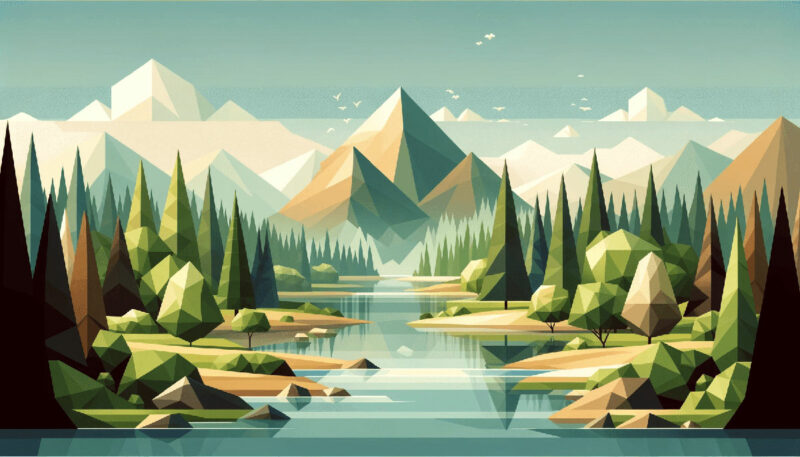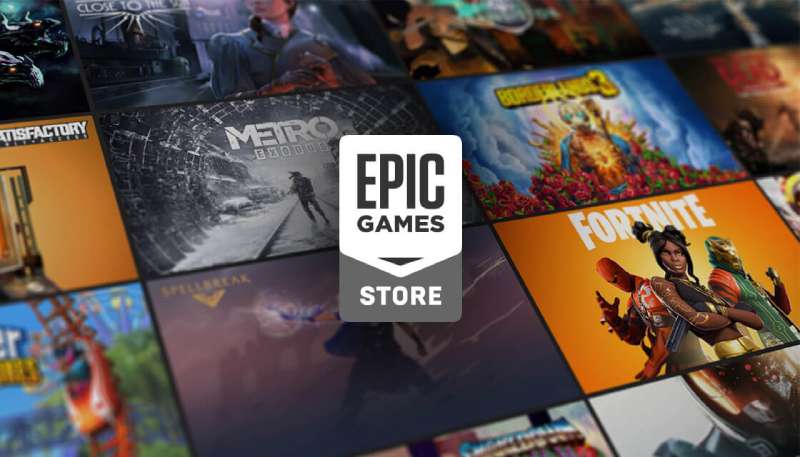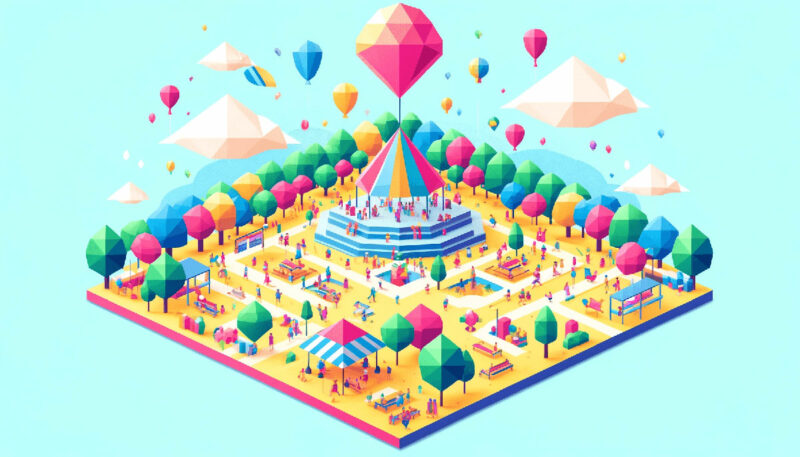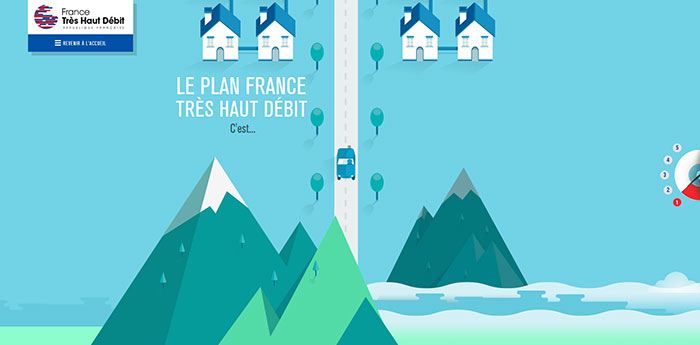How to Make a Mood Board Like a Pro
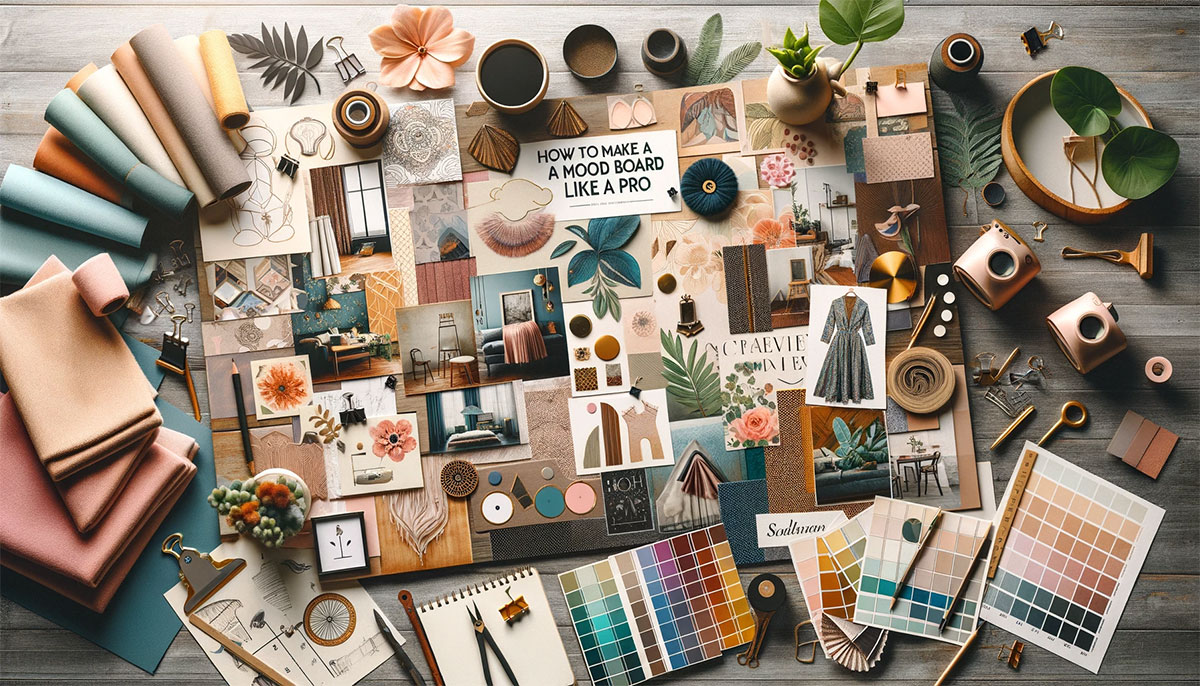
Have you ever stood before a blank canvas, your mind buzzing with ideas yet not knowing where to start? That’s where the magic of a mood board steps in. Think of it as your creative anchor, a visual brainstorming buddy that helps you channel your thoughts into something tangible and stunning.
In this article, you’re about to dive into the world of mood boards – a toolkit for the imagination.
Whether you’re an aspiring designer, a DIY enthusiast, or just someone looking to bring a dash of creativity into your life, understanding how to make a mood board can be a game-changer.
It’s more than just slapping images together; it’s about crafting a cohesive theme, selecting the perfect color schemes, and weaving in those all-important textures and patterns.
By the end, you’ll not only grasp the design process behind these artistic wonders but also how they’re a cornerstone in fields like interior design and brand identity. Get ready to transform how you gather creative inspiration and turn those swirling ideas into a masterpiece of your own!
Table of contents
- Benefits of Creating Mood Boards
- Key Elements of a Mood Board
- Steps to Creating an Effective Mood Board
- Digital vs. Physical Mood Boards
- Applications of Mood Boards
- Best Practices and Tips
Benefits of Creating Mood Boards
Enhancing Creativity and Vision
Ever felt like your ideas are just floating around, hard to pin down? That’s where a mood board becomes your best friend. It’s all about organizing and recording ideas.
Picture this: You’re working on a new project, ideas zipping through your brain. You start pulling together images, textures and patterns, a splash of color schemes here and there. Before you know it, what was once a jumble in your mind is now a beautiful, coherent visual story.
Mood boards aren’t just pretty collages; they’re powerful tools for visualizing abstract concepts. They help you see the bigger picture, literally.
Whether it’s for interior design, fashion, or branding, a mood board is like a map that guides your creative journey, ensuring you don’t get lost in the maze of your own thoughts.
Practical Advantages
Providing Direction and Focus
Let’s be real, creativity can be messy. It’s easy to get carried away or hit a dead end. Here’s where learning how to make a mood board really shines.
It gives you a clear direction, a focal point. You start aligning your ideas with the mood board, and suddenly, everything makes sense. It’s like having a compass in the wild terrain of creativity.
Facilitating Team Collaboration and Communication
Ever tried explaining a creative concept and just got blank stares in return? Mood boards are here to save the day.
They’re not just tools for solitary artists; they’re amazing for teamwork. When you’re working in a group, it’s crucial that everyone’s on the same page.
With a mood board, you can visually communicate your vision. It becomes a shared language, transcending words.
Plus, with today’s digital mood board tools, it’s easier than ever to collaborate, whether your team is in the same room or scattered across the globe.
Key Elements of a Mood Board
Imagery and Visuals

Let’s start with the fun part: pictures, textures, all the visual goodies. When you’re figuring out how to make a mood board, this is your playground.
You want to pick images that spark something, that say “this is the vibe.” But it’s not just about throwing together a bunch of cool pictures. It’s more like crafting a visual story.
Think of each image as a piece of a puzzle. You’re not just looking for pretty pictures; you’re looking for the right ones. They should connect, creating a flow that guides the eye and the mind. And textures? Oh, they’re the secret sauce. They add depth, make your mood board pop.
Selection of Images and Textures
When selecting images and textures, it’s all about balance. You want diversity, but not chaos.
Each element should contribute to the overall theme. If you’re working on an interior design project, textures might be fabric swatches or paint chips.
For a branding project, it could be graphics or logos. It’s like gathering pieces of a dream and laying them out for the world to see.
Importance of a Central Image
Every mood board needs a star, a central image that’s the heart of it all. This image sets the tone. It’s the one that catches the eye first and holds the theme together.
When you nail this, you’ve got a solid foundation for your mood board.
Color and Typography
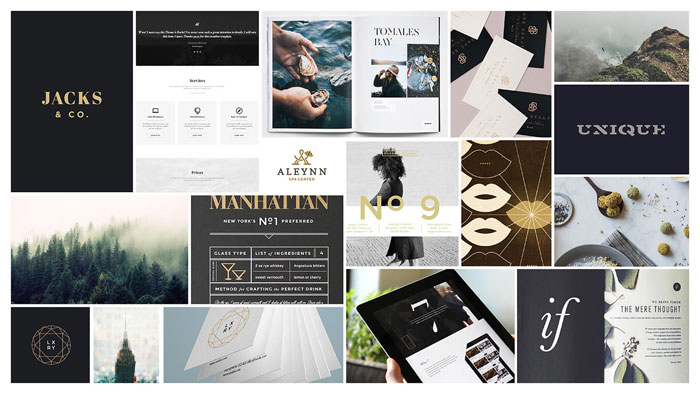
Colors and fonts are like the mood board’s voice. They tell a story beyond what you see.
Role of Color Schemes
Colors evoke emotions. They create atmosphere. Picking the right color scheme is crucial. It’s like choosing the music for a movie scene – it sets the mood.
Whether you’re going for bold and vibrant or soft and soothing, your color choices are key players in how to make a mood board that truly resonates.
Selection of Fonts
Fonts are the unsung heroes of mood boards, especially in branding. They speak volumes about style and personality.
You wouldn’t use a playful, whimsical font for a serious, corporate project, right? The font you choose should match the vibe of your images and colors, creating a cohesive visual language.
Additional Elements
Incorporation of Motion and Sound (for Digital Mood Boards)
Now, if you’re playing in the digital space, you’ve got some extra tools in your kit.
Adding motion, like animations or videos, can bring your mood board to life.
And sound? It can take the experience to a whole new level. Imagine a mood board for a beach-themed project with the sound of waves in the background.
It’s like a mini-vacation for your senses.
Use of Descriptive Words and Company Values
Words have power. Even in a visual tool like a mood board, a few well-chosen words can make all the difference.
They can be inspirational quotes, key values of a brand, or just simple descriptors that tie everything together.
It’s like whispering a secret message that only the viewer can hear, guiding them deeper into the story your mood board tells.
Steps to Creating an Effective Mood Board

Conceptualization
Imagine you’re about to start a journey, but instead of packing a bag, you’re gathering ideas. That’s conceptualization.
It’s the part where you dig deep and ask, “What’s the vibe I’m going for?” Is it sleek and modern for a web design project, or cozy and warm for an interior design gig?
Defining the Theme or Central Idea
Start by zoning in on your theme. What’s the heart of your project? It could be anything from ‘vintage nostalgia’ to ‘futuristic tech’.
This step is crucial; it’s like setting your GPS before you start driving. You’ve got to know where you’re heading.
Brainstorming Session with the Team
If you’re not flying solo, bring your crew together for a brainstorming sesh. Throw ideas around, no filters.
Remember, every idea is worth hearing. Sometimes the craziest ideas spark the best concepts.
Collection and Curation
Now, let’s get our hands dirty – metaphorically, of course. We’re diving into the treasure trove of visuals, colors, and all things mood board.
Gathering Relevant Materials and Elements
This is where you become a collector. Hunt down those images, textures, and patterns that align with your theme.
For making a mood board in the digital realm, there are tons of online resources. Think digital images, color palette generators, and even typography websites.
Curating and Organizing the Mood Board
Layout is key.
Play around with arrangements until it feels just right. Think about flow, balance, and how each element complements the others.
Refinement and Feedback
You’re almost at the finish line. Your mood board is looking snazzy, but let’s add that final polish.
Reviewing and Refining the Mood Board
Take a step back. Look at your creation with fresh eyes. Does it tell the story you want?
Are the colors and images vibing together? This is where you tweak and fine-tune.
Seeking Feedback for Improvement
Now, it’s time to get a second (or third) opinion. Show your mood board to someone else.
It could be a colleague, friend, or even your target audience. Fresh perspectives can shed light on things you might have missed.
Digital vs. Physical Mood Boards
Advantages of Digital Mood Boards
Okay, let’s talk digital. Imagine creating a mood board with just a few clicks, dragging and dropping images, changing colors on a whim.
That’s the digital way. It’s like having a magic wand for creativity.
Flexibility and Ease of Editing
Digital mood boards are like shape-shifters. Want to swap an image? Easy. Change a color? No problem.
They’re super flexible, letting you tweak and twist things until they’re just right.
Plus, you’ve got the whole internet as your playground – endless images, textures, color schemes, and fonts at your fingertips.
Ability to Include Multimedia Elements
Here’s where it gets really cool. Digital mood boards can include motion, sound, even videos. They’re not just static images; they’re living, breathing creations.
Think about adding a video clip to your mood board for a fashion project or a snippet of a song for a branding concept. It’s like adding another dimension to your ideas.
The Charm of Physical Mood Boards
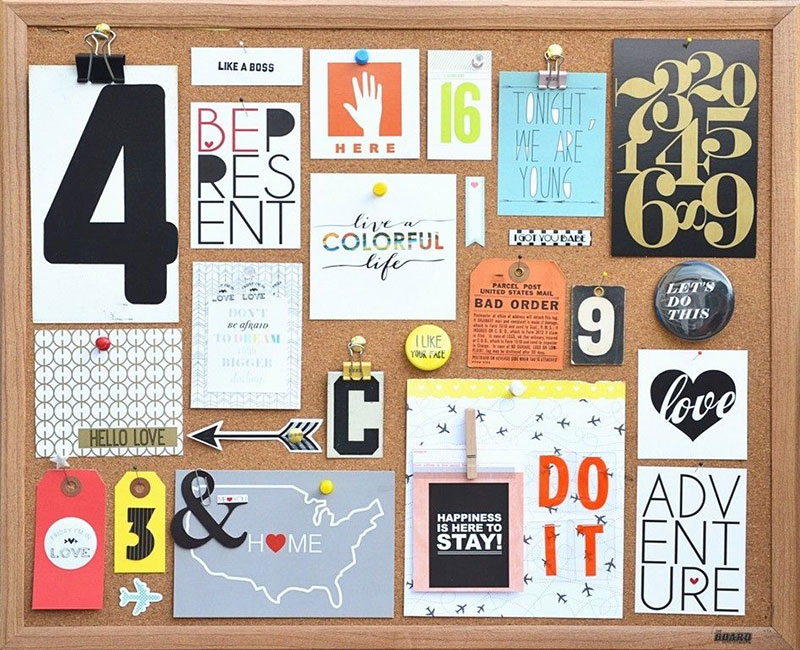
But hey, let’s not forget about the old-school charm of physical mood boards. There’s something about touching and feeling the materials that’s just… special.
Tangibility and Physical Interaction
Physical mood boards are hands-on. Cutting out images, feeling the texture of the paper, moving elements around manually – it’s a whole experience.
There’s a tangible connection that you just don’t get with digital boards. Plus, they give a real-world feel, especially useful for projects like interior design or fashion.
Use in Certain Creative Fields
In some fields, like interior design, having physical samples of materials is crucial. You want to see and touch the fabrics, the wood, the metal.
It’s about bringing the sensory experience into the creative process. Plus, presenting a physical mood board to a client has its own wow factor. It’s like saying, “Here, step into the world I’ve created.”
Applications of Mood Boards
Industry-Specific Uses
Ever wonder where mood boards really shine? Let’s dive into their role across different industries.
It’s like taking a tour through a world of creativity, seeing how one tool morphs to fit so many different needs.
Fashion
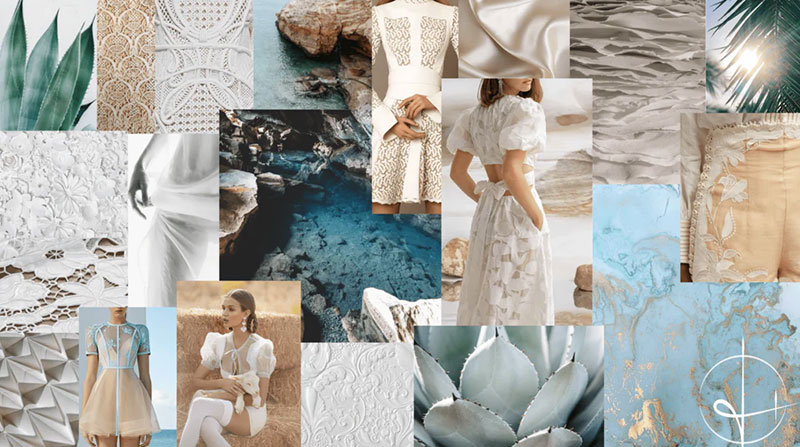
Fashion mood boards are the first sketch of a designer’s vision. They bring together fabrics, colors, styles – the whole aesthetic of a collection.
It’s about capturing the essence of a trend or theme, giving life to what will eventually strut down the runway.
Interior Design
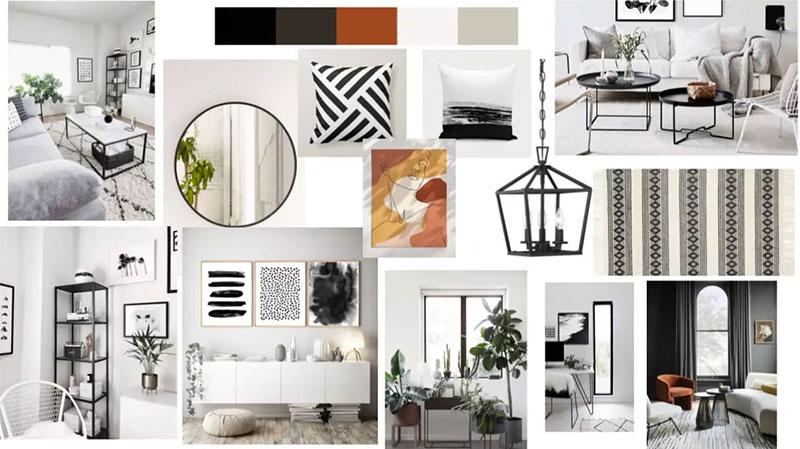
Now, interior designers? They use mood boards to paint a picture of a space before it even exists. It’s about blending colors, furniture styles, textures, making sure everything feels just right.
When you’re learning how to make a mood board for interior design, think of it as a mini version of the room you’re creating.
UI/UX Design
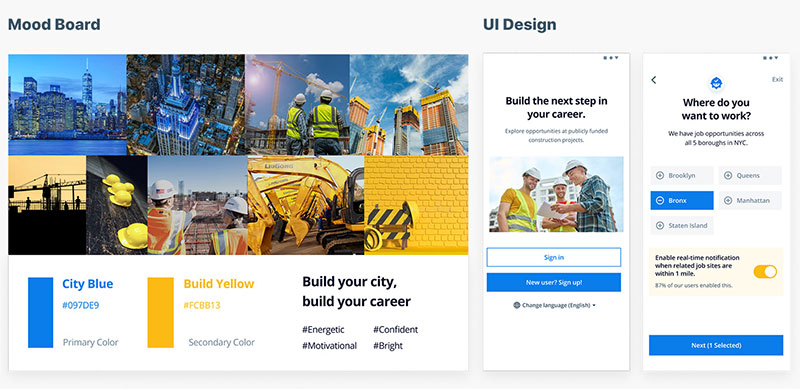
UI/UX mood boards help in visualizing websites and apps. It’s about nailing the look and feel, the user experience.
What colors and fonts will make the site pop? How will the layout guide the user’s eye? It’s a playground for creativity before the coding begins.
General Creative Processes
Branding
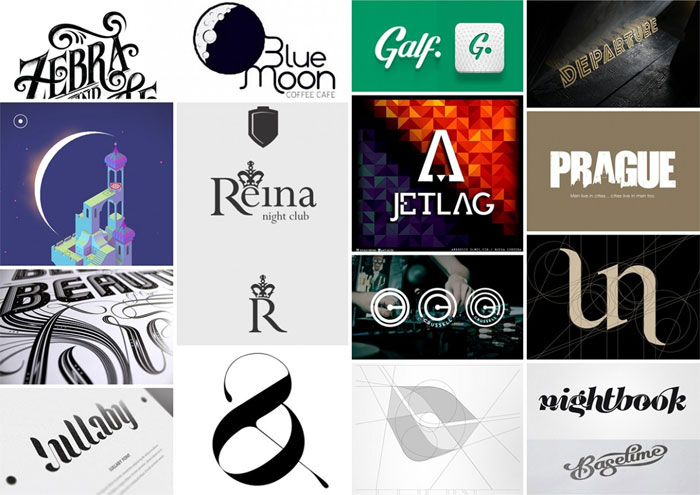
Mood boards in branding? Super important. They’re like the first step in creating a brand’s identity.
What vibe does the brand give off? What emotions does it evoke? It’s about translating abstract brand values into something visual.
Marketing
Marketing mood boards are used to brainstorm campaigns. They set the tone for how a product will be presented to the world.
It’s not just about the product; it’s about the story around it. What imagery and themes will connect with the audience? That’s what you’re figuring out.
Personal Projects
And hey, mood boards aren’t just for pros. They’re awesome for personal projects too.
Planning a wedding, redecorating your room, or just exploring your own creativity – mood boards are your go-to tool. They help you visualize your ideas and make them real.
Best Practices and Tips
Balancing Creativity with Coherence
Creating a mood board is like walking a tightrope between wild imagination and clear, coherent vision.
It’s about letting your creativity run wild but also keeping it in check so your mood board doesn’t turn into a jumbled mess.
Encouraging Diverse Ideas While Maintaining a Unified Theme
Think of it like hosting a party. You want a mix of guests – some loud, some quiet, each bringing their own flavor.
But, the party needs a theme, something that ties everything together. Same with mood boards. Mix different images, textures, color schemes, but make sure they all dance well together, echoing a central theme.
Collaborative Approaches
When more brains are involved, mood boards can turn into a real brainstorming fiesta. It’s about combining different perspectives, making the mood board richer, more nuanced.
Involving Team Members and Stakeholders
Imagine you’re a band. Each member brings their own sound. When making a mood board in a team, encourage everyone to contribute.
Maybe someone has a knack for creative inspiration, another has a sharp eye for design trends. Together, you create a symphony of ideas that’s more vibrant than a solo act.
Utilizing Technology
In today’s world, tech tools are like superpowers for creativity. Especially when you’re learning how to make a mood board, these tools can be game-changers.
Leveraging Digital Tools for Collaboration and Efficiency
Digital mood boards offer a universe of possibilities. You’ve got tools that let you drag and drop, tweak and tune, all in real-time, even when you’re miles apart.
And hey, if you’re going old-school with a physical board, tech can still help. Think apps for collecting images or tools for color palette inspiration.
FAQ on Mood Boards
What Is a Mood Board?
Mood boards? Think of them like visual diaries. They’re collages of images, textures, and colors that capture the vibe of a project or idea.
You’re essentially putting your thoughts and inspirations onto a canvas, making them tangible. It’s about setting the tone, whether for design, branding, or personal projects.
How Do I Start Making a Mood Board?
Starting off, get clear on your theme. What’s the story you want to tell? Gather inspiration – could be anything from photos, color swatches, to fabric samples.
Think about the emotions you want to evoke. This initial brainstorm is your roadmap for creating a cohesive mood board.
What Should I Include in a Mood Board?
Include images, color palettes, and patterns that resonate with your theme. Think about the project’s purpose – is it for fashion design, interior decorating, or branding?
Tailor your choices to fit this. Don’t forget to add textures and maybe even some inspirational quotes to give it more depth.
Can I Make a Mood Board Digitally?
Absolutely! Digital mood boards are a breeze with the right tools – think software like Canva or Adobe Express.
They let you drag and drop elements, experiment with layouts, and even add multimedia. Plus, they’re easy to share and tweak, making them perfect for collaborative projects.
What’s the Best Layout for a Mood Board?
There’s no one-size-fits-all here, but balance is key. You want an eye-catching center, surrounded by supporting elements that complement without overwhelming.
Arrange your images and elements in a way that guides the viewer through your vision. Think of it as visual storytelling.
How Important Is Color in a Mood Board?
Super important! Color sets the mood board’s overall tone. It can evoke emotions and tie all your elements together.
Choose a color scheme that aligns with your project’s vibe – bold and vibrant for something energetic, soft and muted for something more understated.
How Can I Use a Mood Board for a Team Project?
For team projects, mood boards are fantastic for aligning visions. Share it with your team early on to get everyone on the same page.
It becomes a visual reference point, ensuring all ideas contribute to a cohesive concept. Plus, it’s great for sparking collaborative creativity!
Should My Mood Board Be Detailed or Abstract?
It depends on your project. If precision is key (like in interior design), go detailed. Show exact textures, materials, and colors.
For more conceptual projects (like branding), an abstract mood board with broader themes and moods might be better. It’s about matching the mood board to your goal.
How Can I Make My Mood Board Stand Out?
To make it pop, play with contrasts – mix bold images with subtle textures, combine different color temperatures, and experiment with typography.
Remember, it’s not just what you include, but how you arrange it. A unique layout can turn a good mood board into a great one.
When Is a Mood Board Complete?
A mood board is complete when it feels right – when it clearly communicates the mood and concept you’re aiming for.
It should feel like a coherent collection of ideas, not just random elements thrown together. Trust your gut; when it feels complete, it probably is.
Conclusion on How to Create a Mood Board
Making a mood board is more than just slapping pictures together; it’s a creative exploration, a way to translate your thoughts into something visual and tangible.
Whether you’re diving into the world of interior design, branding, or just spicing up your personal space, mood boards are your secret weapon.
They’re like visual brainstorming – a mix of color schemes, textures, and images that together tell a story, your story.
Digital or physical, each board is a unique reflection of your vision, a bridge between concept and reality. Consider using a mood board template to get started, which can provide a helpful structure for your creative process.
- Nature Color Palettes Inspired by the Outdoors - 25 April 2024
- The Epic Games Logo History, Colors, Font, And Meaning - 24 April 2024
- Spread Joy: Happy Color Palettes for Uplifting Designs - 24 April 2024


